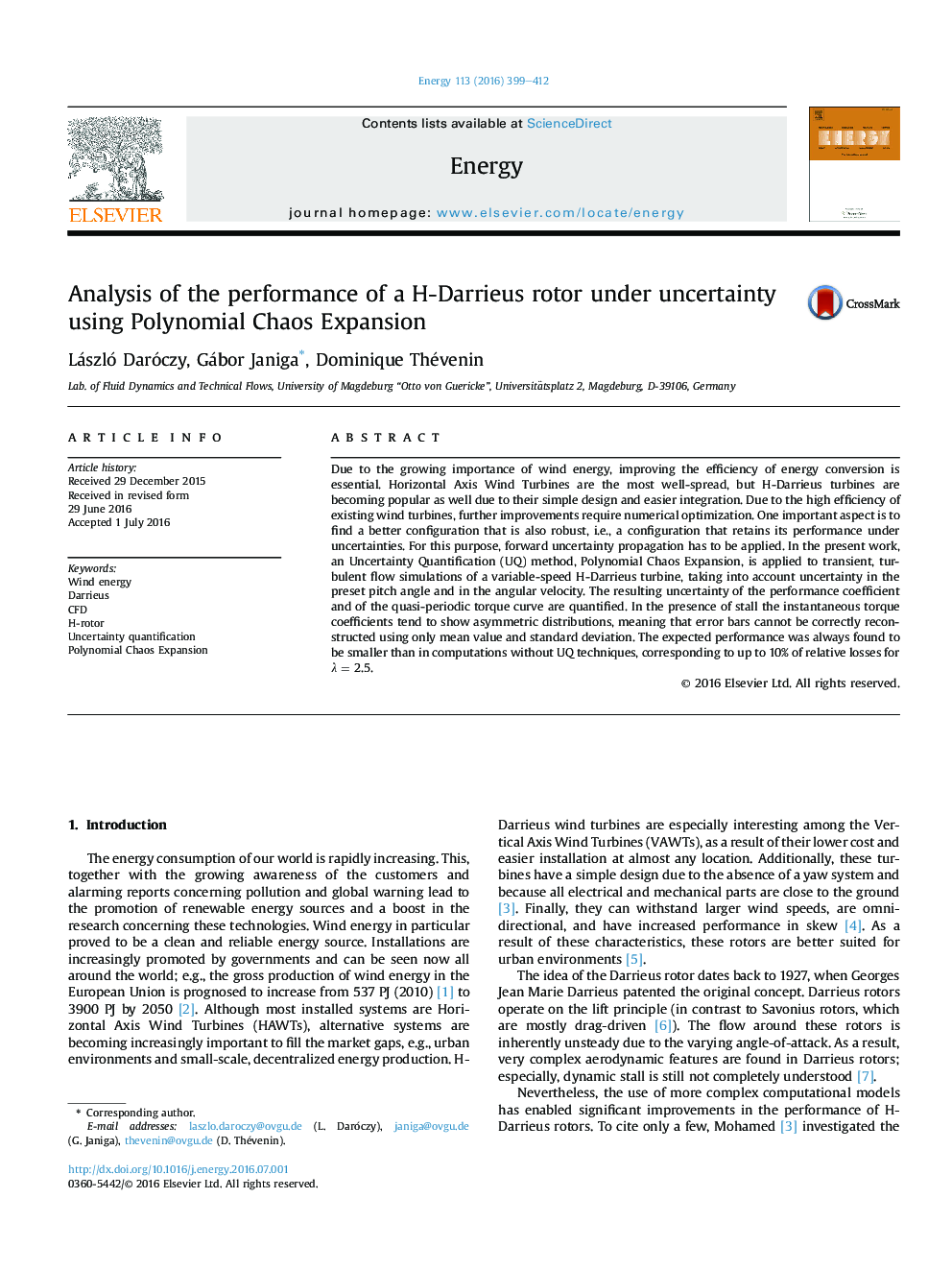| Article ID | Journal | Published Year | Pages | File Type |
|---|---|---|---|---|
| 1730749 | Energy | 2016 | 14 Pages |
•Uncertainty Quantification/Polynomial Chaos Expansion successfully applied to H-rotor.•Accounting simultaneously for uncertainty in pitch angle and angular velocity.•Performance coefficient decreases by up to 10% when accounting for uncertainty.•For low tip-speed-ratio, high-order polynomials are needed.•Polynomial order 4 is sufficient to reconstruct distribution at higher TSR.
Due to the growing importance of wind energy, improving the efficiency of energy conversion is essential. Horizontal Axis Wind Turbines are the most well-spread, but H-Darrieus turbines are becoming popular as well due to their simple design and easier integration. Due to the high efficiency of existing wind turbines, further improvements require numerical optimization. One important aspect is to find a better configuration that is also robust, i.e., a configuration that retains its performance under uncertainties. For this purpose, forward uncertainty propagation has to be applied. In the present work, an Uncertainty Quantification (UQ) method, Polynomial Chaos Expansion, is applied to transient, turbulent flow simulations of a variable-speed H-Darrieus turbine, taking into account uncertainty in the preset pitch angle and in the angular velocity. The resulting uncertainty of the performance coefficient and of the quasi-periodic torque curve are quantified. In the presence of stall the instantaneous torque coefficients tend to show asymmetric distributions, meaning that error bars cannot be correctly reconstructed using only mean value and standard deviation. The expected performance was always found to be smaller than in computations without UQ techniques, corresponding to up to 10% of relative losses for λ = 2.5.
